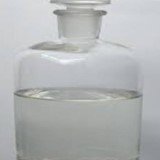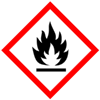Acetone SDS MSDS of Manufacturers & Exporters
Please visit Acetone USP NF ACS BP Ph Eur EP JP IP Analytical reagent FCC Food grade Manufacturers our associates world class FDA-GMP approved, ISO-9001 Certified facility Anmol Chemicals

Acetone CAS Number 67-64-1
Acetone SDS, Safety Data Sheet
MSDS, Material Safety Data Sheet 13-Aug-22
1. PRODUCT AND COMPANY IDENTIFICATION
Product Name & Other Names: Acetone or Propanone
CAS Number: 67-64-1
EINECS EC Number: 200-662-2
Molecular Formula: CH3COCH3
Molecular Weight: 58.08
Relevant uses and uses advised against (if any): Industrial Manufacturing.
Suppliers: As per letterhead.
2. HAZARDS IDENTIFICATION
GHS, Globally Harmonized System Classification in accordance with 29 CFR 1910
Classification according to Regulation (EC) No 1272/2008
Flammable liquids Category 2, H225
Serious eye damage/eye irritation Category 2B, H319
Specific target organ toxicity - single exposure (Category 3), Central nervous system, H336
Labeling according to GHS & Regulation (EC) No 1272/2008
GHS Label Elements

Flammable Liquid |
GHS Label Elements

Irritant |
Signal Words (GHS-USA): Danger
Hazard statements (GHS-USA):
H225 Highly flammable liquid and vapor.
H319 Causes serious eye irritation.
H336 May cause drowsiness or dizziness.
Precautionary statements (GHS-USA):
P210: Keep away from heat/sparks/open flames/hot surfaces – No smoking.
P261: Avoid breathing vapors.
P264: Wash --- thoroughly after handling.
P271: Use only outdoors or in a well-ventilated area.
P273: Avoid release to the environment.
P280: Wear protective gloves/protective clothing/eye protection/face protection.
P302+352: IF ON SKIN: Wash with soap and water.
P305+351+338: IF IN EYES: Rinse cautiously with water for several minutes. Remove contact lenses if present and easy to do – continue rinsing.
3. COMPOSITION / INFORMATION ON INGREDIENTS
Product Name & Other Names: Acetone or Propanone
CAS Number: 67-64-1
EINECS EC Number: 200-662-2
4. FIRST-AID MEASURES
Always seek medical advice after the first aid treatment.
Eye contact: Rinse immediately with plenty of water for 10 minutes at least. Contact a physician if symptoms persist.
Skin contact: Wash thoroughly with soap and water; flush with plenty of water. Take off spoilt clothes. Contact physician if symptoms persist.
Ingestion: Wash the mouth with water; seek medical advice immediately.
Inhalation: Remove from exposure site to fresh air and keep at rest. Obtain medical advice.
5. FIRE-FIGHTING MEASURES
Flash point: -20C
Extinguishing media recommended: CO2, foam, dry chemicals, Water spray.
Non recommended: Do not use direct water jet on burning material.
Extinguishing procedures: Closed containers may build up pressure at elevated temperatures. If possible, containers should be cooled with a water spray. For large fires, apply water from as far as possible. Keep containers and surroundings cool with water spray. Beware of vapors accumulating to form explosive concentrations. Vapors can accumulate in low areas.
Special Information In the event of a fire, wear full protective clothing and NIOSH-approved self-contained breathing apparatus with full face piece operated in the pressure demand or other positive pressure mode. At high temperatures under fire conditions, it may produce toxic or irritating fumes.
6. ACCIDENTAL RELEASE MEASURES
Personal precautions, protective equipment and emergency procedures: Avoid breathing dust/fumes/gas/mist/vapors/spray. Use individual protective equipment (waterproof boots, suitable protective clothing, safety glasses, etc.). Do not approach facing the wind.
Environmental precautions: Do not let the product enter drains, soil, or water sources.
Methods and materials used for containment cleanup procedures and Storage: Contain spilled material. Cover with an inert, non-combustible absorbent material, (e.g., sand, earth, diatomaceous earth, vermiculite). Vacuum or sweep up and remove to an approved disposal container. Avoid open flames or other sources of ignition.
7. HANDLING AND STORAGE
Precautions for safe handling: Apply according to good manufacturing and industrial hygiene practices. Ensure proper ventilation. Wash thoroughly after handling. Do not drink, eat or smoke while handling. Avoid contact with skin, eyes and clothing. Minimize dust generation. Avoid breathing dust/fumes/gas/mist/vapors/spray. Keep container tightly closed. Avoid ingestion and inhalation. Use individual protective equipment (waterproof boots, suitable protective clothing, safety glasses, etc.).
Conditions for safe storage, including any incompatibilities: Store in cool, dry and ventilated area away from heat sources and protected from sunlight in tightly closed original container. Keep air contact to a minimum. Do not leave the material container open. Store protected from heat, sparks and ignition sources and incompatible materials. Avoid contact with skin and eyes. Avoid inhalation of dust/mist/vapor. Do not store with incompatible materials like bases, oxidizing agents, reducing agents. Keep away from ignition sources and naked flame. - No smoking. Take measures to prevent the build-up of electrostatic charge. To avoid ignition of vapors by static electricity discharge, all metal parts of the equipment must be grounded.
8. EXPOSURE CONTROL
Exposure limit values:
ACGIH TWA (ppm): 250 ppm
ACGIH STEL (ppm): 500 ppm.
Ventilation System: A system of local and/or general exhaust is recommended to keep employee exposures as low as possible.
Personal Respirators (NIOSH Approved): For conditions of use where exposure to dust or mist is apparent and engineering controls are not feasible, a particulate respirator may be worn.
Skin Protection: Wear protective gloves and clean body-covering clothing.
Eye Protection: Use chemical safety goggles and/or full-face shield where dusting or splashing of solutions is possible. Maintain eye wash fountain and quick-drench facilities in work area.
Other Control Measures: Maintain good housekeeping in work area. Handle in accordance with good industrial hygiene and safety practice.
9. PHYSICAL AND CHEMICAL PROPERTIES
Appearance: Clear colorless liquid
Odor: Sweet.
Odor threshold: Not available.
pH: 7
Relative density: 0.79
Melting point/freezing point: -95C.
Initial boiling point and boiling range: 56C.
Flash point: -20C Closed cup.
Auto-ignition temperature: 465C.
Decomposition temperature: No information found.
Upper/lower flammability or explosive limits: No information found.
Vapor pressure: No information found.
Vapor density: No information found.
Evaporation rate: No information found.
Flammability (solid, gas): No information found.
Partition coefficient: n-octanol/water: No information found.
Solubility(ies): Soluble in water.
Viscosity: No information found.
Molecular Formula: CH3COCH3
Molecular Weight: 58.08
10. STABILITY AND REACTIVITY
Reactivity: It presents no significant reactivity hazards, by itself or in contact with water. Avoid contact with strong acids, alkali, or oxidizing agents.
Decomposition: Carbon monoxide and unidentified organic compounds may be formed during combustion.
Conditions to avoid: Heat, sparks, open flames, and other ignition sources. Avoid temperatures exceeding the flash point. Contact with incompatible materials. Avoid Bases, Oxidizing agents, Reducing agents, Direct sunlight. Extremely high or low temperatures. Acetone reacts violently with phosphorous oxychloride.
11. TOXICOLOGICAL INFORMATION
LD 50 ORAL/RAT (mg/Kg): 5800 mg/kg
LD 50 DERMAL/RABBIT (mg/Kg) >15800 mg/kg.
LC50 inhalation rat (ppm): 30000 ppm/4h
Carcinogenic Effects: Not a reported carcinogen by NTP, ACGIH, OSHA.
IARC: 3 - Group 3: Not classifiable as to its carcinogenicity to humans (2-Propanol).
Mutagenic Effects: No information found.
Developmental Toxicity: No information found.
Reproductive Effects: No information found.
12. ECOLOGICAL INFORMATION
Toxicity to fish LC50: Oncorhynchus mykiss (rainbow trout) - 5,540 mg/l - 96 h
Toxicity to daphnia and other aquatic invertebrates: LC50 - Daphnia magna (Water flea) - 8,800 mg/l - 48 h.
Results of PBT and vPvB assessment: This substance/mixture contains no components considered to be either persistent, bioaccumulative and toxic (PBT), or very persistent and very bioaccumulative (vPvB) at levels of 0.1% or higher.
13. DISPOSAL CONSIDERATIONS
In accordance with local environmental laws. Avoid disposing into drainage systems and into the environment.
14. TRANSPORT REGULATIONS
Land Transport DOT USA, TDG Canada & ADR/RID Europe
UN-No: UN1090
Proper Shipping Name: ACETONE
Hazard Class: 3, Packing Group: II
Sea Transport IMDG/IMO & Air Transport IATA/ICAO
UN-No: UN1090
Proper Shipping Name: ACETONE
Hazard Class: 3, Packing Group: II.
15. REGULATORY INFORMATION
USA:
SARA 311/312 Hazards: Fire Hazard, Immediate Acute Health Hazard.
California Prop. 65 Components: Not listed to cause cancer, birth defects, or any other reproductive harm.
Section 16 - Additional Information
DISCLAIMER: The information and recommendations set forth herein are presented in good faith and believed correct as of the date hereof. It is compiled from various sources, and it is not necessarily all inclusive nor fully adequate in every circumstance. In addition, these suggestions should not be confused with nor followed in violation of applicable laws, regulations, rules, or insurance requirements applicable. This SDS MSDS sheet is intended only as a guide to the appropriate precautionary handling of the material by a professionally trained person using this product. Individuals receiving the information must exercise their independent judgment in determining its appropriateness for a particular purpose. This shall not constitute a guarantee for any specific product features and shall not establish a legally valid contractual relationship. In no case shall our company be liable to loss or damages by the product user.
Specifications of Acetone BP Ph Eur EP JP USP NF IP ACS Analytical Reagent FCC Food grade Manufacturers |







